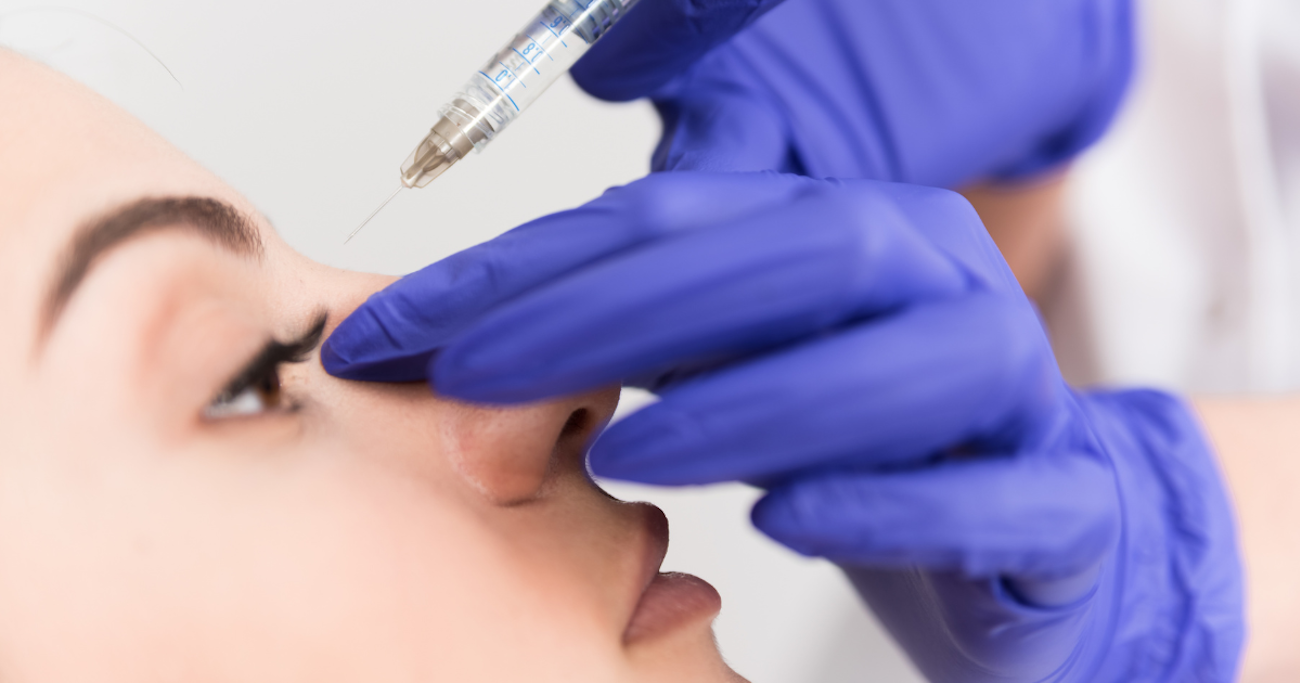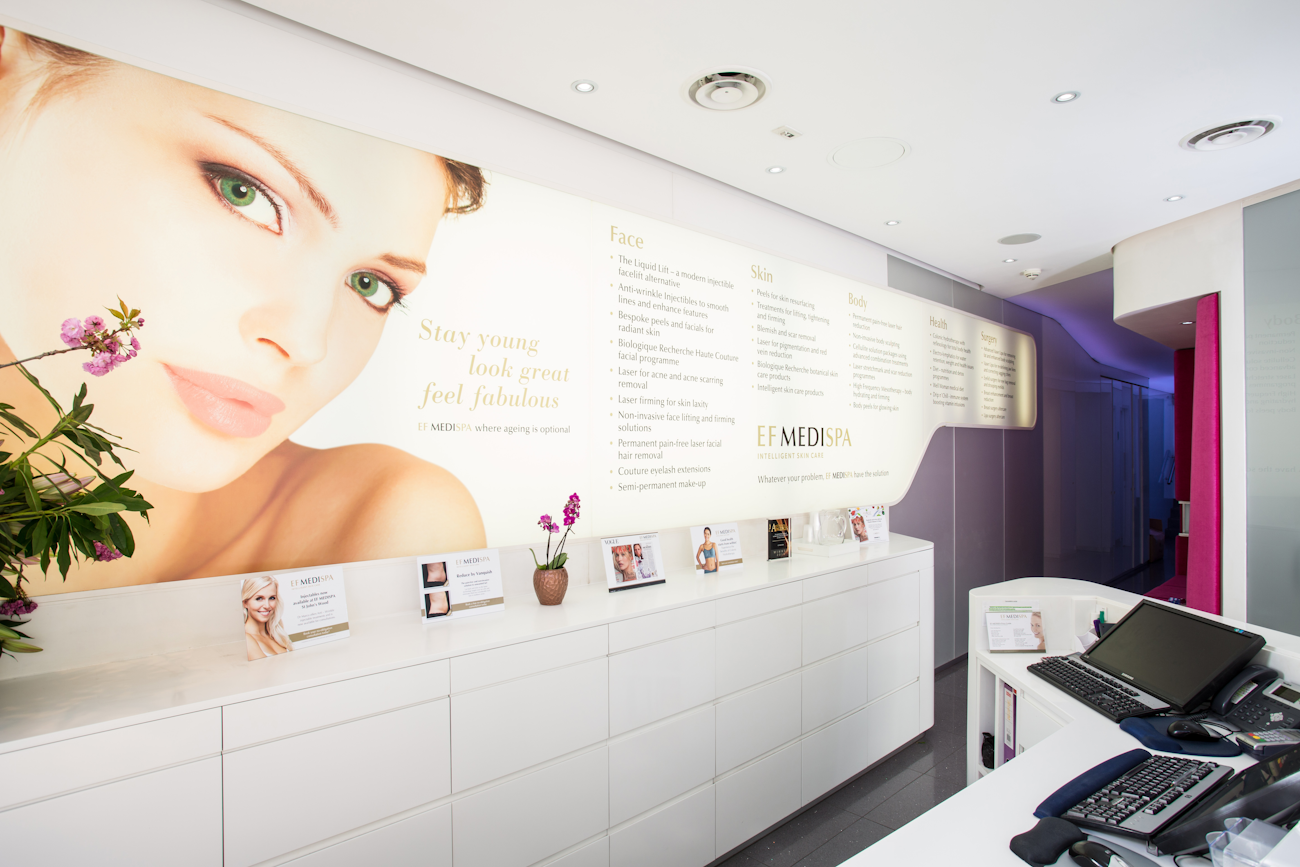Surgical Rhinoplasty vs. Non-Surgical Rhinoplasty: Which is best?

If you are bothered by the appearance of your nose or have respiratory issues due to your nose shape, you may be considering a rhinoplasty (also known as a nose job). When cosmetic surgery became popular in the 1970s and 80s, the only option available for those looking to correct their nose shape or size was through invasive surgery—which many could not afford or were too afraid to commit to. Fast forward to the present day, and a new, less invasive option for those looking to change their nose has become available and is rapidly rising in popularity—the non-surgical (or liquid) rhinoplasty.
If you are considering a nose job, you may be wondering which procedure is best to go for in relation to your specific goals. So, in this article we are going to explore the key differences between surgical and non-surgical rhinoplasties, to help you make an informed decision and achieve the best results possible.
What is surgical rhinoplasty?
According to the British Association of Aesthetic Plastic Surgeons (BAAPS), surgical rhinoplasties are the sixth most popular cosmetic surgery for women and the first most popular procedure for men in the UK.
Surgical rhinoplasties are an invasive cosmetic procedure carried out by a specialist surgeon. This procedure involves making an incision in the nose and removing or manipulating the cartilage to achieve particular medical or aesthetic goals. This procedure has permanent results and must be carefully researched before you make a decision to ensure you get the best possible outcome and are not put at any risk.
What is non-surgical rhinoplasty?
Non-surgical (or liquid) rhinoplasties, on the other hand, are a non-invasive alternative to traditional rhinoplasty. Non-surgical nose jobs involve injecting dermal fillers into the nose to augment the shape and size of it. The results are non-permanent and usually last between 12-18 months, meaning you can return to your old nose shape if you wish. However, one thing to keep in mind is that this procedure is solely for achieving aesthetic results and will not correct any medically related nose problems.

Surgical vs. non-surgical rhinoplasty: key differences
In order to make the right decision and achieve the best results possible from your prospective rhinoplasty, there are some important comparisons to be considered. These include:
The procedure
Surgical rhinoplasty: As mentioned above, surgical rhinoplasty is an invasive procedure. Before the surgery, you will be administered a general anaesthetic to put you to sleep. Your surgeon will then reshape your nose depending on your preference, which will have been discussed in consultations prior to your surgery. The reshaping process is usually done by chiselling away cartilage and bone and slicing tissue to adjust the shape or size of the nose. These surgeries usually take between one and three hours, and you will be required to stay in a hospital for one to two nights afterwards.
Non-surgical rhinoplasty: Compared to a surgical nose job, liquid rhinoplasties are a much less invasive procedure. No general anaesthetic is required. However, your practitioner may apply a local anaesthetic numbing cream beforehand to help ease any discomfort. During the procedure, dermal fillers made of hyaluronic acid (a natural component found in the skin) will be injected into areas of the nose to change its shape and smooth out any imperfections. This procedure usually takes no longer than an hour, and you can return to your everyday routine straight after.
Pricing
Surgical rhinoplasty: Surgical rhinoplasties are not available on the NHS and can only be done privately. Depending on the extent of your surgery and who you choose to get the surgery from, the price can vary. Usually, in the UK, with a good and reputable surgeon, a surgical nose job will cost anywhere between £4,000 and £7,000—a price many people may not be able to afford. However, some clinics offer a finance option to spread the cost, so make sure to enquire with your chosen clinic if this is the route you are looking to go down.
Non-surgical rhinoplasty: Non-surgical nose jobs are a cheaper and more readily available option for those who can’t afford surgery. Prices vary between clinics, but usually in the UK, non-surgical rhinoplasties cost between £300 and £500 – a much more affordable option for those who don’t have thousands to spend.

Results
One of the most influential factors you will need to consider before deciding which procedure is best for you is the results you wish to achieve.
Surgical rhinoplasty: If you wish to reduce the size of your nose or wish to correct an issue with your nose that affects your breathing, surgery will be best for you. Surgical rhinoplasties chisel away and manipulate the cartilage and tissue to reduce the size and alter the form of your nose—correcting any respiratory issues and balancing out the proportions of your face. Seeing the results from a surgical nose job can take time as swelling from the trauma and supportive post-op dressings will hide your new nose for a few weeks. Surgical nose-jobs also provide permanent results, meaning you will not have to keep returning to maintain your new nose shape.
Non-surgical rhinoplasty: If your main concern is not with your nose being too large, and instead is a shape-related issue, then a non-surgical nose job could be best for you. This process involves adding filler to the nose to reshape it and smooth out imperfections such as a protruding dorsal hump (nose bump), or a hooked tip. This procedure is better for those who are not looking to have their face permanently changed or are afraid to go "under the knife’ and want instant results. This is because dermal fillers dissolve after a period of time (usually 12–18 months), allowing you to return to your original nose shape if you wish.

Pain and Recovery
Surgical rhinoplasty: Surgical rhinoplasty is always performed under a general anaesthetic – so the actual surgery itself is totally painless due to the fact that you’re not awake. But the pain after surgery is something that needs to be considered. As your body will have undergone trauma from invasive surgery, you will experience some swelling, bruising, and discomfort for 3–4 weeks whilst your body recovers and heals itself.
In terms of recovery, after a surgical nose job, you will be required to stay in the hospital for 1-2 nights before you can go home. Once home, you will be asked to take it easy and not do anything strenuous, and you will be advised to take a week or two off work to allow time for a proper recovery. You’ll most likely have internal dressings that stay in place for 1–7 days after the surgery, and you’ll need to wear an external splint for about a week. You may also experience some old blood and mucous seeping out of the nose. As mentioned above, a full recovery will take 3-4 weeks.
Non-surgical rhinoplasty: Non-surgical rhinoplasties are much less invasive, cause less pain and discomfort, and have a minimal recovery time. During the procedure, your aesthetic practitioner will apply a local anaesthetic to numb the area and make treatment more comfortable. You may feel a mild pinching sensation as the needle is inserted and some pressure as the filler is pushed into the skin. In terms of recovery, after a non-surgical nose job, you will be allowed to return to your daily routine immediately. You may experience some swelling or bruising, but this will subside within a few days.

Risks
As with any cosmetic procedure, whether it is surgical or non-surgical, there are risks involved which must be considered.
Surgical rhinoplasty: Any surgical procedure carries risks. But these risks can be reduced by ensuring you do your research on the clinic and surgeons you have on your shortlist to ensure they are registered to carry out the procedure safely and by following the aftercare advice of your surgeon. The risks of a surgical nose job include:
- Anaesthesia risks
- Change in skin sensation (numbness or pain)
- Difficulty breathing
- Infection
- Nasal septal perforation (a hole in the nasal septum) is rare. Additional surgical treatment may be necessary to repair the septum, but it may be impossible to correct this complication
- Poor wound healing or scarring
- Possibility of revisional surgery
- Skin discoloration and swelling
- Unsatisfactory nasal appearance
These risks, and others, will be fully discussed prior to your consent. It is important that you address all your questions directly with your plastic surgeon.
Non-surgical rhinoplasty: Non-surgical nose jobs carry much less risk, but this doesn’t mean to say they are without any risk at all.These risks can be reduced by doing your research and following the aftercare guidelines given to you by your practitioner. The risks of a non-surgical rhinoplasty include:
- Fever
- Blurred vision
- Increasing redness or swelling
- Vascular complications
- Tissue death
- Vision loss
Safe and trusted liquid rhinoplasty at EF MEDISPA
If you have decided a non-surgical rhinoplasty is best for you, it is very important that you feel certain and are wholly confident in your choice of clinic and practitioner. At EF MEDISPA, we can help you experience nose reshaping in our safe and welcoming environment. Our main priority is your safety and your comfort, as well as your peace of mind from expert treatment. We only employ highly experienced, expert doctors to perform lip injection treatments at our clinics. This helps us provide patients with the best lip filler results.
From the initial consultation and meeting with your designated doctor, right up until your next top-up appointment, our team of medical professionals are here to support you. We’ll answer any questions or queries you may have whilst we monitor your results and your progress with your brand-new nose fillers. We hold regular review appointments with you to make sure you are on track and achieving the look you desire. The whole team here at EF MEDISPA is fully committed to achieving the very best and most natural-looking results. Book a consultation with us today.


